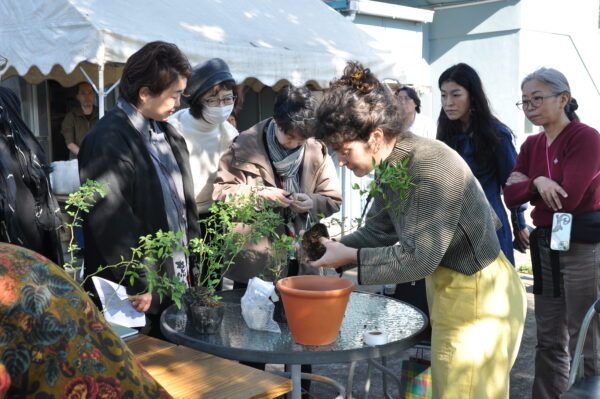ExhibitionFinished
Date : Oct. 30, 2024 -Mar. 23, 2025
Yoi Kawakubo Left is Right-The Garden of 4.5 Billion Years and Boiled Frogs
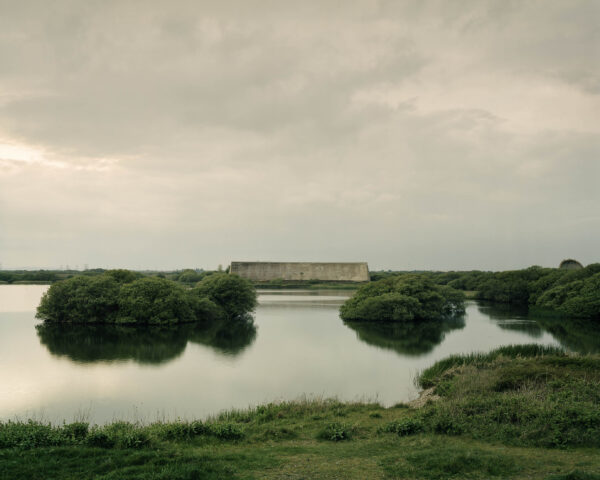
Contemporary artist Yoi Kawakubo, based in London (born in Spain in 1979), works across various media including photography, video, and installation. Since around 2014, he has been creating a series of works, including field research, that explore the use of nuclear power plants and nuclear technology. This exhibition presents a range of Kawakubo’s past works along with new pieces, displayed throughout both the large and small galleries and outdoor spaces of the Maruki Gallery. The subtitle “The Garden of 4.5 Billion Years” references the age of the Earth and evokes a time scale beyond human comprehension, which serves as a key concept in understanding the exhibition.
Since the 2011 Fukushima nuclear disaster, Kawakubo has travelled to the region and conducted experiments where he buried negative film in the soil and unearthed it after a certain period of time. The ten Polaroids displayed in the main gallery document his repeated tests, reflecting his ongoing engagement with the land of Fukushima through artistic practice. His new video work, “Slow Violencello” (2024), was filmed primarily in Rokkasho Village, Aomori Prefecture, and features the artist playing the cello in a forest, shot on 16mm film. This work draws inspiration from the concept of “Slow Violence”—the idea of a subtle yet inexorable violence that progresses unnoticed and cannot be easily addressed—often associated with environmental issues, forming the central theme of the exhibition.
Visitors will also recognise elements from the video within the gallery, such as a smartphone displaying a market chart, which resonates with a new painting featuring the stock price of uranium, displayed on a pedestal. “Scent” is also part of the media, as Kawakubo notes. Essential oils extracted from plants gathered near nuclear facilities in both the UK and Japan are mixed into the paint, contributing to the composition of the paintings. Neon works, a signature of Kawakubo’s practice, will also be on display both indoors and in the garden, including a neon sign reading “LEFT IS RIGHT,” with the letters reversed. Kawakubo’s neon pieces, which hold self-referential qualities, can be seen in the context of conceptual art lineage, including artists like Joseph Kosuth and Bruce Nauman. Additionally, the geopolitical issues of nuclear power plant locations, highlighting the central-peripheral exploitation structure, are linked to the mechanisms of capitalism and colonialism, providing a multilayered framework for the exhibition. Pine cones from Rokkasho have sprouted new shoots and are growing in a corner of the museum garden. The various temporal scales flowing through the exhibition include the time of artistic practice, longer than a single human life, the time of plants, which often exceeds that, and the approximately 4.5 billion years of uranium-238’s half-life, extending to the age of the Earth.
For this exhibition, Australian artist Gabriella Hirst, an acquaintance of Kawakubo, will introduce a rose species called “Atom Bomb Rose” to Japan, attempting to propagate it through cuttings. This act, rich in symbolism, raises questions beyond binary structures of good and evil, casting doubt on what can truly be deemed right or wrong. “Left is Right”—where “right” and “left” often symbolise correctness or morality in the Western world—poses deep philosophical questions, asking viewers to reflect and seek answers as they engage with the works.
Supported by:
Harmonic Ito Foundation
The Ogasawara Toshiaki Memorial Foundation
The Great Britain Sasakawa Foundation
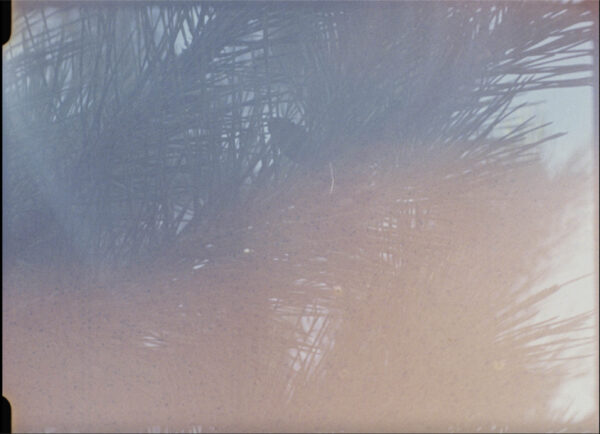
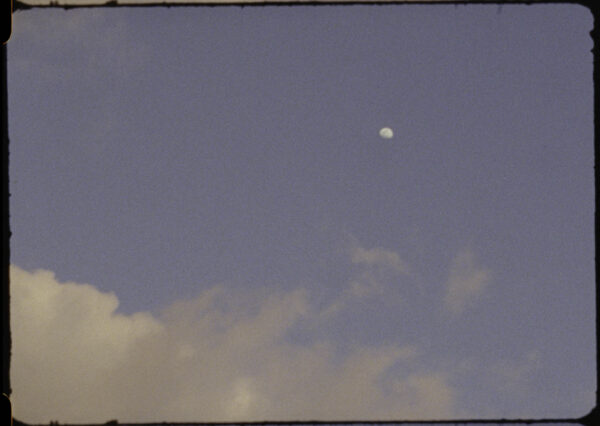





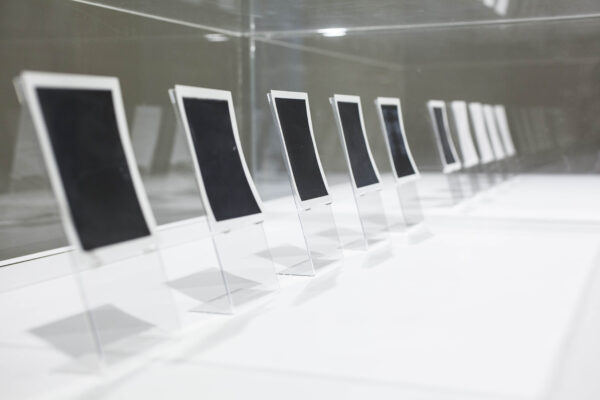






Symposium Information:
Date and Time: Sunday, 3 November 2024, 14:00-16:00
Venue: The Maruki Museum for the Hiroshima Panels
Symposium Participants:
Gabriella Hirst
Artist and writer from Sydney (Cammeraygal land), currently living in Berlin. She works primarily with moving image, sculpture, performance, and with the garden as a site of critique and care, exploring the politics of capture, the maintenance of illusions of stasis within archival systems, and the structural violence(s) embedded within decorative and the ornamental forms.
Lovely Umayam
Writer, nuclear policy researcher, and founder of the Bombshelltoe Policy x Arts Collective (www.bombshelltoe.com) a multi-disciplinary research collective exploring the intersection of arts, culture, and history to promote nuclear nonproliferation, arms control and disarmament for the next generation. She is currently a consultant at the United Nations Office of Disarmament Affairs.
Erika Kobayashi
Writer and artist. Author of the novel Trinity, Trinity, Trinity (translated into English by Brian Bergstrom (AstraHouse), winner of the US-Japan Friendship Fund Japanese Literature Translation Prize 2022-2023), and Girls Who Make Balloon Bombs, which was made into a musical reading with Saho Terao. Girls Who Make Balloon Bombs (Bungeishunju) and others.
Yoi Kawakubo
Artist with multicultural background who explores the ontology of structures regarding justice and legitimacy, the unearthing of marginalised historical narratives and the analysis of social issues such as the ethics of financial markets or the problems of nuclear energy. BA in Disability Sciences, Faculty of Humanities, University of Tsukuba. Major group exhibitions include Picturing the Invisible (Royal Geographical Society, London) and Yokohama Triennale 2020 (Yokohama Museum of Art).
Yukinori Okamura
Curator of the The Maruki Gallery for the Hiroshima Panels.



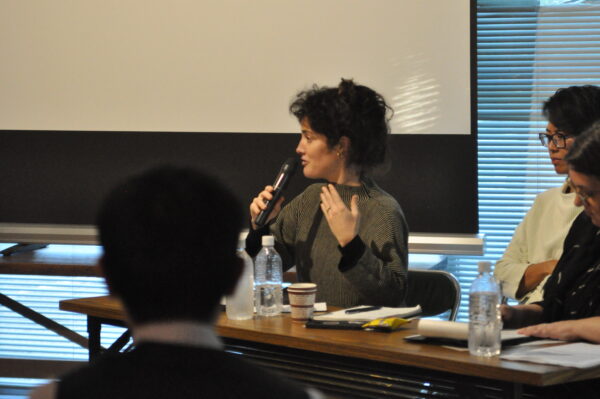
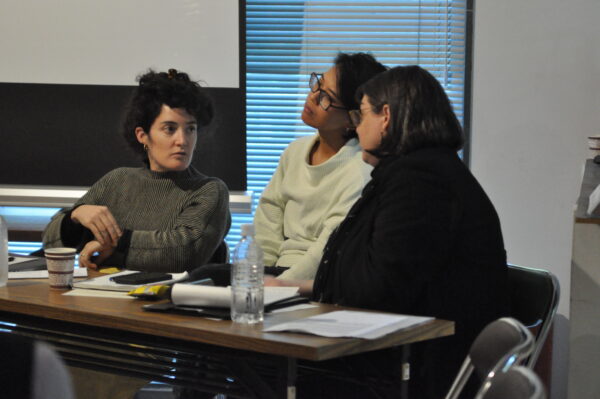

Workshop Information:
How to Make a Bomb’ Rose Grafting Workshop by Gabriella Hirst.
As part of artist Gabriella Hirst’s project ‘How to Make a Bomb’, a workshop where participants will learn how to propagate the rare rose variety ‘Atom Bomb Rose’, learn about rose grafting through hands-on experience, and learn about the link between horticulture and nuclear history.
Free for participants. Reservations required.
Google Form Link https://docs.google.com/forms/d/e/1FAIpQLSfBC3vGSdaa4eBCDLdPb6uvPIH-tuDfrTWZaDeINJbthy7Aww/viewform
Date and Time: Sunday, 3 November 2024, 11:00-12:30
Place: The Maruki Museum for the Hiroshima Panels Figure





